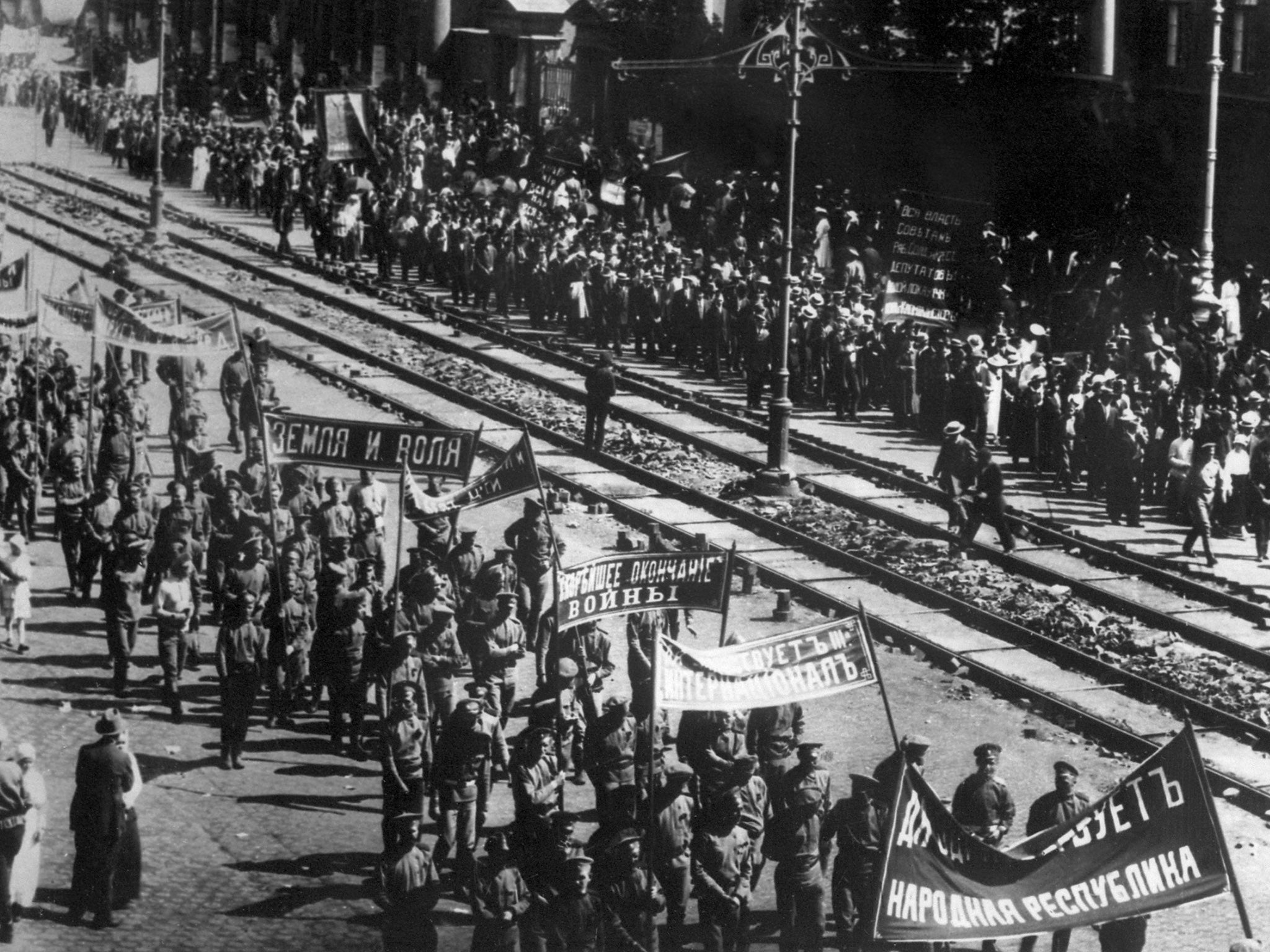How 100,000 Russian women helped create International Women's Day 100 years ago
A march by tens of thousands of women led to the downfall of the Russian empire

Your support helps us to tell the story
From reproductive rights to climate change to Big Tech, The Independent is on the ground when the story is developing. Whether it's investigating the financials of Elon Musk's pro-Trump PAC or producing our latest documentary, 'The A Word', which shines a light on the American women fighting for reproductive rights, we know how important it is to parse out the facts from the messaging.
At such a critical moment in US history, we need reporters on the ground. Your donation allows us to keep sending journalists to speak to both sides of the story.
The Independent is trusted by Americans across the entire political spectrum. And unlike many other quality news outlets, we choose not to lock Americans out of our reporting and analysis with paywalls. We believe quality journalism should be available to everyone, paid for by those who can afford it.
Your support makes all the difference.Celebrated worldwide, International Women’s Day marks all the progress women have made in the battle for equal rights and acknowledges how far they still have to go.
Women across the globe are honouring the day in their own ways.
In the US many are participating in the #ADayWithoutWomen strike against Donald Trump, which has forced two US school districts to close their schools for the day because so many female teachers were going to strike. Around 25,000 students are affected.
This strike is the latest in a long history of industrial action by women, but it was one march that happened exactly 100 years ago that has arguably had the greatest impact.
Although the first recorded Women's Day was organised by the Socialist Party of America in New York on 28 February 1909, it was a solidarity protest by a group of female textile workers in Russia in 1917 that changed the course of European history.
It is the anniversary of their demonstration which is now used to celebrate the day.
On 8 March (23 February in the old Russian calendar) 1917, tens of thousands of women took to the streets of St Petersburg – then called Petrograd – carrying banners demanding the Tsarist government “feed the children of the defenders of the motherland”.
Russia was in a state of near collapse as the First World War placed an intolerable strain on the already weak economy. On the Home Front famine loomed and women from working in the cities factories had had enough.
By the middle of the afternoon female textile workers from the Vyborg side of city had gone out on strike shouting "bread" and "down with the Tsar".
They were later joined by men working in the factories and soon around 100,000 workers were out in force in Nevsky Prospekt – the main street in the city – demanding an end of the Romanov dynasty which had ruled Russia since 1613.
Russian troops attempted to repel the crowds but most were inexperienced, ill-equipped reservists because the experienced soldiers were away on the front lines.
As a result they could do little more than attempt to frighten the protesters. Many, angry at the poor state of the army, sided with them.
This weakness emboldened the protesters who came back in force over the coming days and revolutionaries – who had been agitating for change for decades – gave speeches calling for the end to Tsardom in the city’s main squares while the authorities looked on powerlessly.
Tsar Nicholas II’s ministers begged him to return the capital and resign but the autocrat, who was 500 miles away on the front line, refused and instructed them to crack down on the protesters.
Peaceful protests soon turned to riots and spread to other parts of the country. One by one regiments of the Tsar’s army began to mutiny as protesters smashed police stations, the headquarters of the secret police, the district court and seized the weapons arsenal.

By 15 March Nicholas was finally persuaded to sign the order formally abdicating on behalf of himself and his young son Alexei.
His brother, Grand Duke Mikhail was set to take over, but after realising he would have no support as ruler, the next day he declined to accept the crown.
Instead he handed power over to the Provisional Government – which immediately granted women the right to vote on the same terms as men.
But after taking the reigns of power, they quickly became equally unpopular as it remained committed to staying in the war despite Russia being near in a state of near economic collapse and struggled to solve the food shortages.
Just eight months later on 7 November, the Bolsheviks led by Vladimir Lenin staged a coup d'etat, storming the Winter Palace and seizing control of the government.
Following the murder of Nicholas and his family in 1918 and a bitter civil war between 1917 and 1922, the Bolsheviks were able to establish the world’s first Communist state.
It lasted until 1991, triggering decades of fear and tension with other world powers.
The Communists made the day a national holiday in Russia in 1917 but it remained a working day until 1965, when the Soviet government decreed it a holiday.
Historians have debated whether the first Russian revolution of 1917 was as spontaneous as it seemed or whether it was orchestrated by socialist agitators.
But this was a day when demonstrations by a few thousand angry women began the downfall of the most powerful empires on Earth.
Join our commenting forum
Join thought-provoking conversations, follow other Independent readers and see their replies
Comments